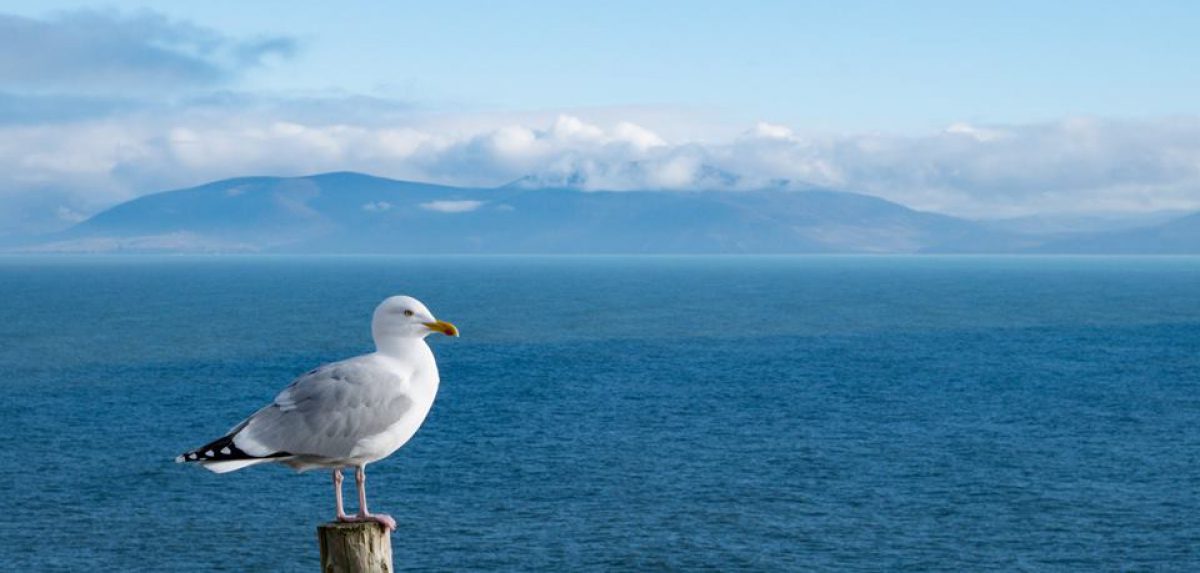Photo of St Nicholas’ Cathedral, Galway by P.J. McKenna
Angel: My people — before I was changed — they exchanged this as a sign of devotion. It’s a Claddagh ring. The hands represent friendship, the crown represents loyalty… and the heart… Well, you know…
— Buffy the Vampire Slayer, season 2
In the late 17th century, many Irish were leaving their home for a new life in the New World. Among them was young Richard Joyce, a native of Galway city. But he never reached the Americas; instead his fate would be a lot stranger. En route, the ship that carried him was attacked by Barbary pirates.
The sea held many terrors, but the Barbary pirates of North Africa ranked highly. They ransacked European ships, claiming their crew and passengers as well as their cargo as booty. Sometimes they even raided on land, as they had in Baltimore, County Cork. For there was a thriving trade in slaves on the Barbary Coast.
Like many before him, Richard was brought to Algiers and sold. But he was more fortunate than most, because he was taken in by a goldsmith and taught his trade.
On his arrival at Algiers, he was purchased by a wealthy Turk, who followed the profession of a goldsmith, and who, observing his slave, Joyce, to be tractable and ingenious, instructed him in his trade, in which he speedily became an adept.
— History of the Town and County of Galway, James Hardiman (1820)
Under this master, Richard created a new design, a ring. The design was most likely influenced by the existing “fede rings”, which showed two hands clasping each other, but it added two new elements: a heart being held by the hands, and a crown topping the heart. These three items together symbolized the motto, “Let Love and Friendship Reign“.
When William of Orange came to the throne, he negotiated for the return of all British slaves in Algiers, and among these was Richard Joyce. His master had evidently grown fond of him, for he offered Richard freedom and the hand of his daughter in marriage.
Richard declined the offer, and returned to Galway. Legend says that he returned to the sweetheart he’d left behind.
*****
No-one knows exactly when the ring became associated with the Claddagh, a fishing village just outside Galway City. The Irish-speaking Claddagh people kept themselves separate to the mostly English-speaking city, except when they crossed the river to sell their fish. They elected their own king, who sailed a Galway hooker with a special white sail and negotiated on disputes between locals.
By the 19th century, Claddagh mothers were handing down Claddagh rings to their daughters. Sadly, many were forced to pawn these rings during the Great Famine of the 1840s.
The cottages of the Claddagh village were condemned as unsafe in the 1930s, and razed for a housing scheme. Today, the Claddagh is mostly a residential area and part of Galway city, although they do still have their own king.
*****
The ring itself has grown in popularity since it was created. It can be used as a wedding and engagement ring, and is often passed down within families. Queen Victoria wore one, as did that famous slayer of vampires, Buffy Summers.
The Old Claddagh Ring, it was my grandmother’s
She wore it a lifetime, and gave it to me— The Old Claddagh Ring, traditional song
My own grandmother bought me a Claddagh ring for my 21st birthday. When I first wore the ring, the heart was turned outwards from my finger, to show I was single; but nowadays the heart is turned inwards to show it has been taken. That was the last gift my grandmother gave me, because she died the following year.
On my finger is a link to the past: to my grandmother, who was born in the early years of the 20th century, lived through the war of Irish independence, and raised seven children while her husband worked in England; to those Claddagh women, selling the rings their mothers gave them to get the fare to America; and to Richard Joyce, slave and goldsmith, who created such a lovely symbol of friendship, loyalty, and love.
Links
- Buffy and Angel scene (video)
- The Claddagh Ring, Father George Quinn, The Mantle No. 13 (1970)
- The Claddagh — the old and the new, Tom Kenny, The Galway Advertiser 2008-12-18
- Michael Lynskey, King Of The Claddagh, Galway, Shay Hunston Photography

